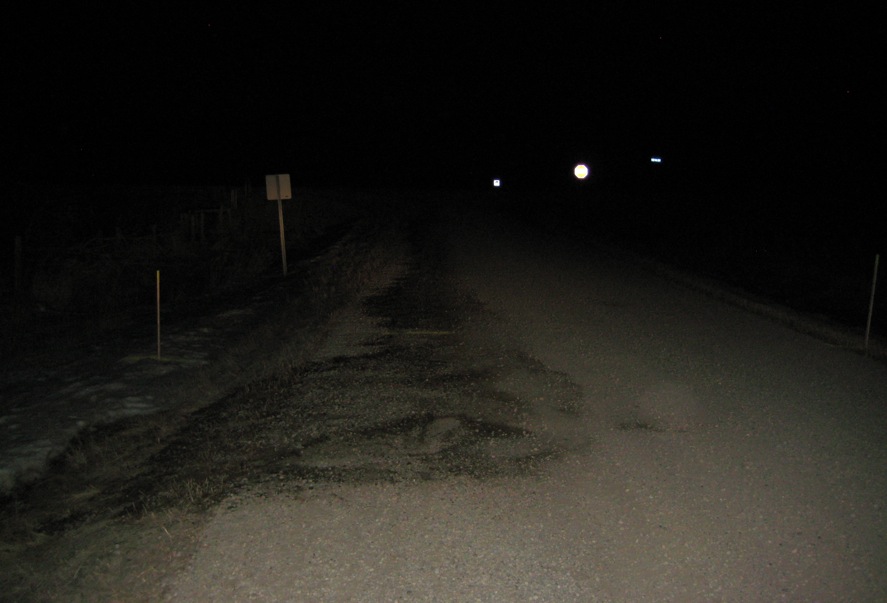Residents fret over oil and gas industry fluid used for dust control, Is it frac flow back or waste or molasses? by Derek Cloutier, September 5, 2013, Cochrane Eagle
A pair of residents who dwell north of Cochrane have voiced concern over how a section of road has been maintained by a Calgary energy company operating a hydraulic fracturing site in the area, more specifically, what is being used to treat the roadways. Dan Thomas and Mike Ross have both expressed unease over what they have referred to as ‘very dark, brown or black-looking stuff’ being spread on Township Road 274 and Range Road 40 as a means of dust control. Thomas, who is a member of the local coalition Cochrane Area Under Siege (CAUS), an organization that has voiced apprehension over the practice of ‘fracking’ in the region, said he approached one of the truck drivers last year who was spreading water on the road during a rainfall, and that the driver admitted that putting water on a gravel road while it was raining ‘did not make any sense,’ but that ‘they’ were making him do it.
Thomas said he did not know whom the driver meant by ‘they’, but that he later contacted Lightstream Resources (formerly PetroBakken Energy), the energy company operating in the area, to voice his displeasure over what he believed to be an abundance of water on the road, but to no avail. Fast forward a year, and Thomas said not only has the dumping continued, but also he is now unsure what kind of substance is being put on the roads. “It appears the haulers were trying to confuse the residents by dumping well fluids under the guise of water-based dust control,” Thomas claimed. “It’s a heck of a mess out here,” echoed Ross, who owns an equestrian centre in the area. “The stuff coming out of the back of the truck is brown to black…it’s not just water.”
Chas Filipski of Lightstream said that his company uses calcium to control dust on the roads around site 14-25, which is near Township Road 274 and Range Road 40. “This is an approved procedure by the Rocky View (County) Roads department,” said Filipski. “It is part of our mandate under our road-use agreement with (the county) that we keep the roads maintained as we work.” Filipski said they use calcium as a stabilizer for dust control as a courtesy to the county and its residents. “It works and lasts longer than water,” he said, “which we don’t want to waste, as it allows us to use less water.” Filipski also pointed out that Lightstream does have a permit from the county to use the roads in question, and that they are inspected by the county to make sure they are being properly preserved. Rocky View County (RVC) concurred, indicating that Lightstream does possess a permit, and that the county has inspected both the roads. “The county does inspect the roads regularly to ensure compliance,” said Stacy McGuire, RVC communications coordinator, “and yes, we have inspected Township Road 274 and Range Road 40 and we have full compliance with the road-use agreement.” McGuire also pointed out that to control dust, the county, and companies that sign the road-use agreement, use calcium chloride, which is like highly concentrated salt water. “This is an environmentally friendly product,” said McGuire, adding that molasses is used as a ‘major ingredient.’
Thomas, however, believes that it is unlikely that molasses would be a primary ingredient in the liquid being used on the roads, and questions why the county or a company would use a product so high in salt content, as it would be quite corrosive on vehicles that utilize the road. Thomas, who is a former energy sector employee, added that produced water from a well site would certainly be highly saline, but he questions whether using it on the roads is legal, saying it often has trace or significant amounts of hydrocarbon in it. Hydrocarbon naturally occurs in crude oil and is an organic compound mixture of hydrogen and carbon. Thomas said he believes that at this point, Lightstream is lying to area residents about what is being put on the roads near the company’s 14-25 site, and that the black stuff being used came from the well. “These guys will do anything to look ‘green,’” said Thomas. “Ultimately, someone should test the material…that means the Alberta Sustainable Resource Development.” [Emphasis added]
 [ Molasses or was it tree sap? Live on tape: natural gas waste dumped on a road in a residential area by Amy Mall, March 22, 2010, Natural Resources Defence Council ]
[ Molasses or was it tree sap? Live on tape: natural gas waste dumped on a road in a residential area by Amy Mall, March 22, 2010, Natural Resources Defence Council ]
[Refer also to:
On the road with the Beet Generation by Daily Reporter, May 19, 2011
Fracking Wastewater Can Be Highly Radioactive by Rachel Morgan, January 28, 2013, Times Online
Questions linger after company spreads toxic chemicals on northern Michigan roads
Michigan regulator cites Encana for spilling over 300 gallons of fracking waste water
DEQ-approved spread of EnCana’s toxic frack flowback in Michigan worse than originally thought
Fracking chemical used in US linked to organ damage
Frio County judge: Stop pumping toxic fracking waste into our ground
Dozens of Illegal Waste Dumpers Arraigned in Jim Wells County Thirteen people pleaded guilty or no contest and 22 failed to appear and had warrants issued for their arrest
Caught On Tape: Chemical Dumping in the Bakken Area–North Dakota (2011)
Feb. 2012 – Oilfield Waste Dumping – Rocky View County, Alberta Canada – LIPG member company, NAL, attempted to clean it up as a ‘good neighbor’ gesture. Photo submitted by FrackingCanada (reportedly, the fluid dumped reeked of diesel)

